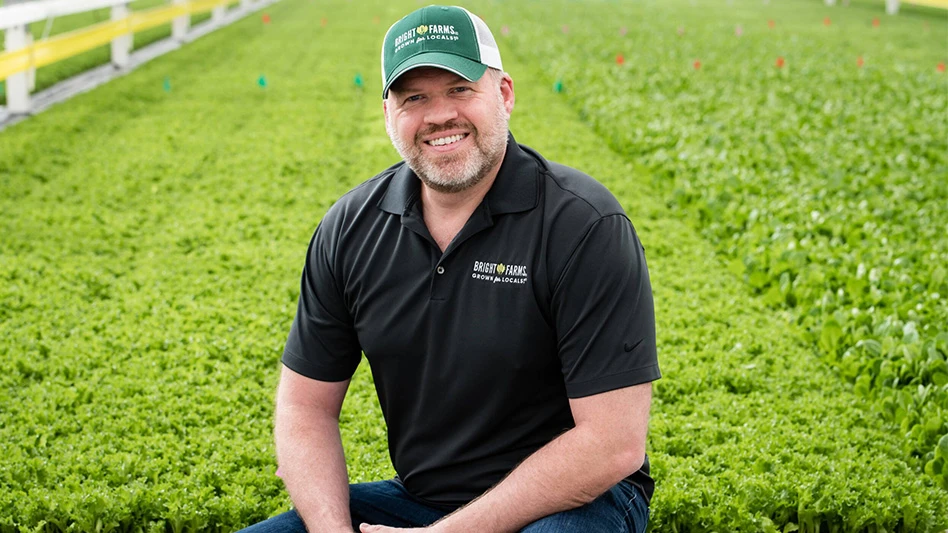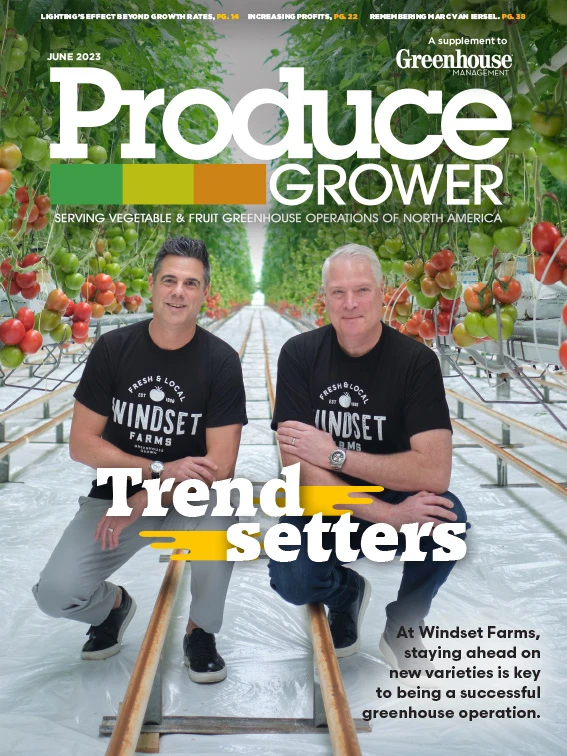

Earlier this year,
BrightFarms announced four new regional hubs to that they say will allow them to reach two-thirds of the U.S. population.
The first hub in Yorkville, Illinois (about an hour’s drive from Chicago) is currently under construction. Other hubs in Macon, Georgia and Lorena, Texas will break ground in the summer while the fourth hub will be built at a to-be-determined location in the Northeast.
BrightFarms says the four hubs will combine to add up to 200-acres of growing space and the capacity to grow roughly 150 million pounds of greens per year.
Greens from the new locations will begin shipping in 2024.
In an exclusive interview with Produce Grower, BrightFarms COO John Schaefer discusses the expansion, why the company is focused on leafy greens and more.

Produce Grower: Why build four new hubs and these four hub locations?
John Schaefer: So, there's three reasons why these hubs and these four locations. First, it's really expanded our reach to our consumers. Each greenhouse is near a large population center, which is great. It also allows us to deliver on our vision, which is scale the business, unlock supply to meet the demand we see out there and increase revenue by 10 times. And lastly, we want to invest further in CEA and expand the industry. Our goal is to build a very efficient farm with advanced technology and automation. The four hubs are large and more efficient, which allows us to be sustainable not only in the environment, but also financially. Consumers can afford to buy our product and, at the same time, BrightFarms can still make money and reinvest into our business.
PG: When you say something like 10 times, how do you as a company decide that's a reasonable financial goal?
JS: A few things go into that. First, we look at the supply we can generate out of these larger hubs. So we can look at how many pounds we can actual produce out of these hubs and do so efficiently and what the cost is to produce that pound. And the strategic partnerships we have — Kroger, Walmart, etc. — is to really understand what their needs are in their regions. So we can start to pair up and say 'hey, this is what our customers want and what they need and what they are seeing as the CEA space is growing and what they want to change their produce departments into.' And then we look to facilitate that.
PG: What do you guys hear from retail customers about your product?
JS: I think what you're seeing is the growth in consumer understanding of what CEA is. I think personally, when you walk into a grocery store, consumers don't know what CEA is and the benefits of a CEA product. So they won't always realize what's in a bag or in a clamshell.
I think what you're seeing is customers seeing rapid growth in that area. So today, they are seeing their traditionally field grown greens being stagnant or dropping off. And you're seeing the CEA space take off and grow as consumers start to see the benefits of the product. ... We can then marry that up with our supply to make sure we have enough products as growth plans hit.
PG: How do you go about picking the exact locations?
JS: It's a multi-pronged approach. We start with what we need from a supply standpoint. We work with our strategic partners to see where their [distribution centers] are, what regions and store locations they have so we can be in the right place for them. It doesn't make sense for us to truck leafy greens across the country from one place to another, so we want to make sure we locate these hubs with multiple [distribution centers] nearby from our partners.
Then we start understanding the location. We need a significant amount of land that is viable to build on from a [flatness] standpoint and from an available resources standpoint. And then population from a labor standpoint. Where do we see a population of workers that can come in, that we can help grow into the ag space?
PG: What has the Cox era, since 2021, been like for BrightFarms?
JS: Cox bought BrightFarms outright, they bought 100%. First and foremost, Cox has a fantastic culture and mission that is aligned with BrightFarms, so it's been great in that sense. But really what it is that Cox brings is capital and resources that really allow us to grow the business. We can focus on the business and execution for our customers instead of being distracted by raising capital or trying to find out where the next dollars are going to come from to put in new technology or new product advancements.
PG: How much growth is there still to be had in greenhouse or indoor-grown leafy greens?
JS: I think there's a significant amount of growth – that's why you see us doing these four hubs initially. What comes down the road, that's still to decide. But these four large hubs and the size at which we are building is because we see that demand and we see it from our customers and hear it from consumers in terms of where they want to go.
In terms of crops, we're really focused on leafy greens. That's really our sweet spot, our expertise and where we really want to go. That doesn't mean we won't continue to innovate in product categories within that space – like something with the salad kits we launched last year that are a very popular item for us. But for other crops, Cox purchased a large stake of Mucci this past year. They grow a different crop, so that allows us to really focus on us as a part of their broader CEA strategy.

Explore the June 2023 Issue
Check out more from this issue and find your next story to read.
Latest from Produce Grower
- The Growth Industry Episode 3: Across the Pond with Neville Stein
- The Growth Industry Episode 2: Emily Showalter on how Willoway Nurseries transformed its business
- How BrightFarms quadrupled capacity in six months
- Oasis Grower Solutions releases two foam AeroSubstrates for hydroponic growers
- FDA Intends to Extend Compliance Date for Food Traceability Rule
- GM CEA HERB Part 2: A guide to increasing the sowing density of culinary herbs
- GM CEA HERB Part 1: Best practices for producing culinary herbs in controlled environments
- USDA Reinstates Fired Probationary Employees





